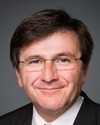Thank you, Mr. Chair.
Thank you to our witnesses for appearing before us today.
This was clearly a unique process. On the one hand, it was very open and transparent, with considerable broad consultation. On the other side of the equation, it was also very confidential. In my opinion, it was the third party involvement—the involvement of the fairness monitor, KPMG, and Pricewaterhouse—and that confidentiality that contributed considerably to the integrity of the process.
Given that, as I believe my colleague Peter Braid said earlier, this is a model that will be employed in the future for other procurement projects, could you share with us some of the practical administrative methods or the model that was employed to gather the information, evaluate the submissions, and follow up with the bidders?
I believe I read in the quite excellent presentation on the video that there were seven separate teams assessing nine areas. How was that done? How was that all coordinated?

